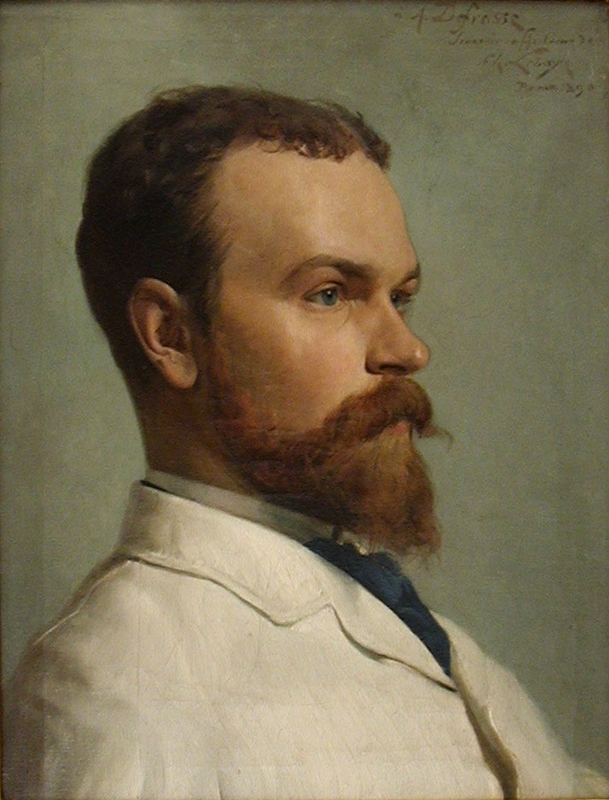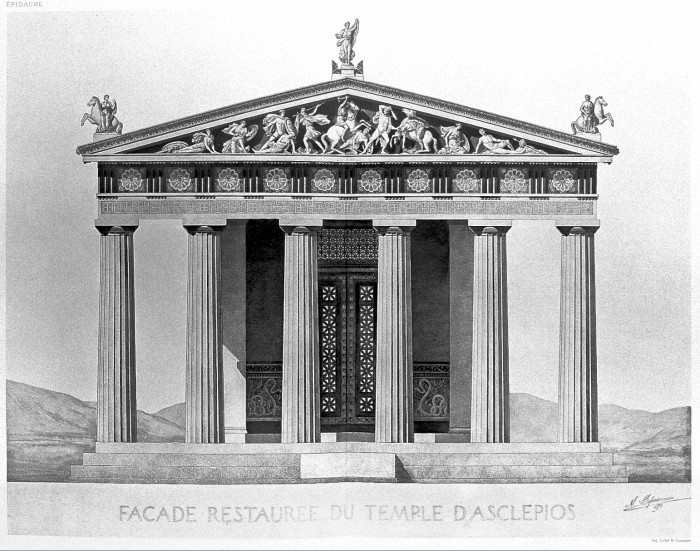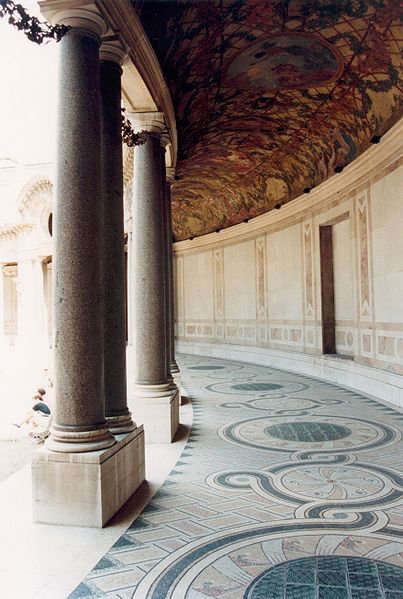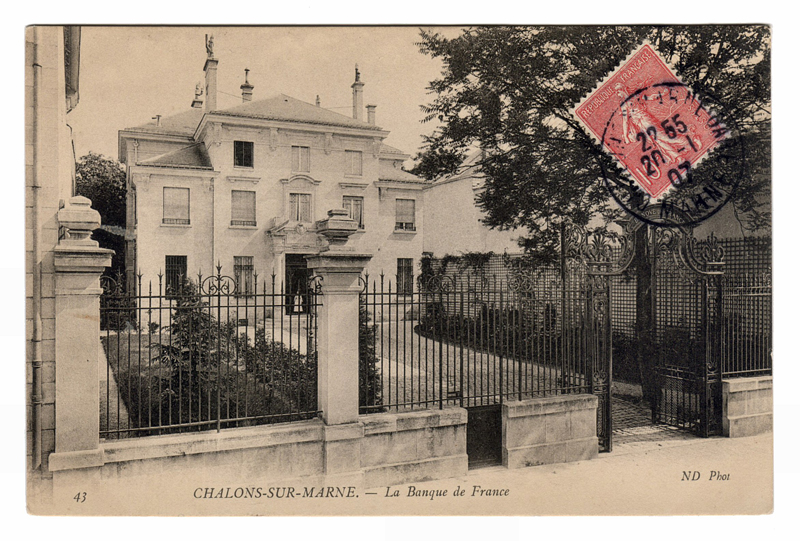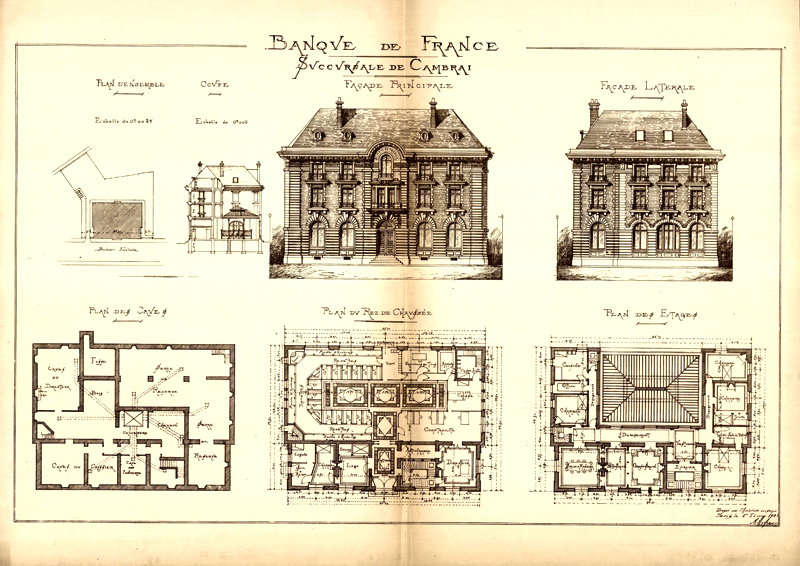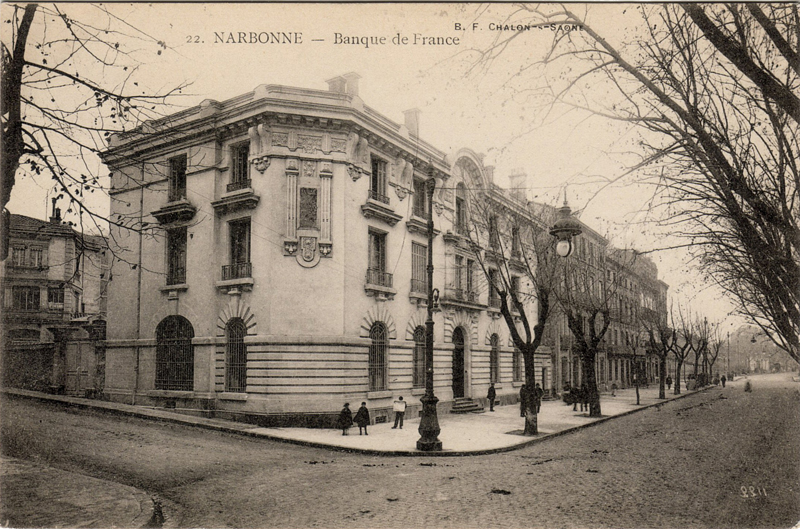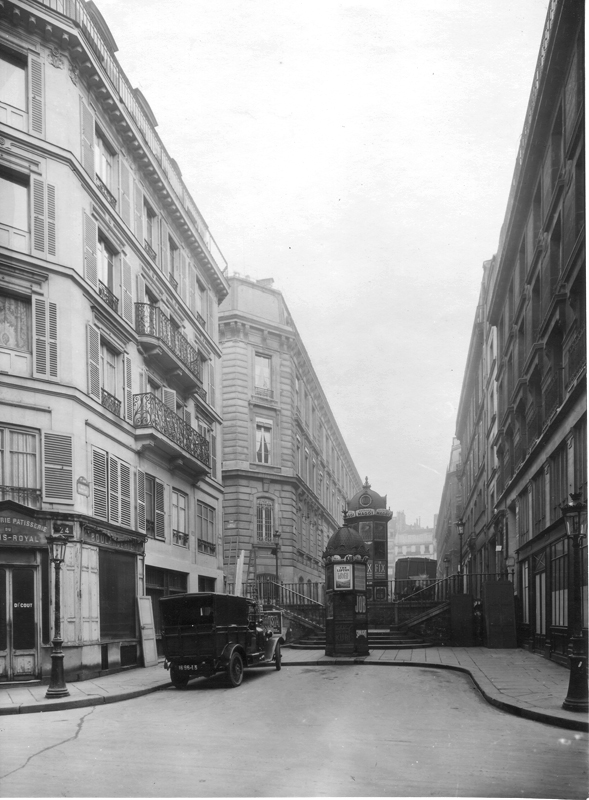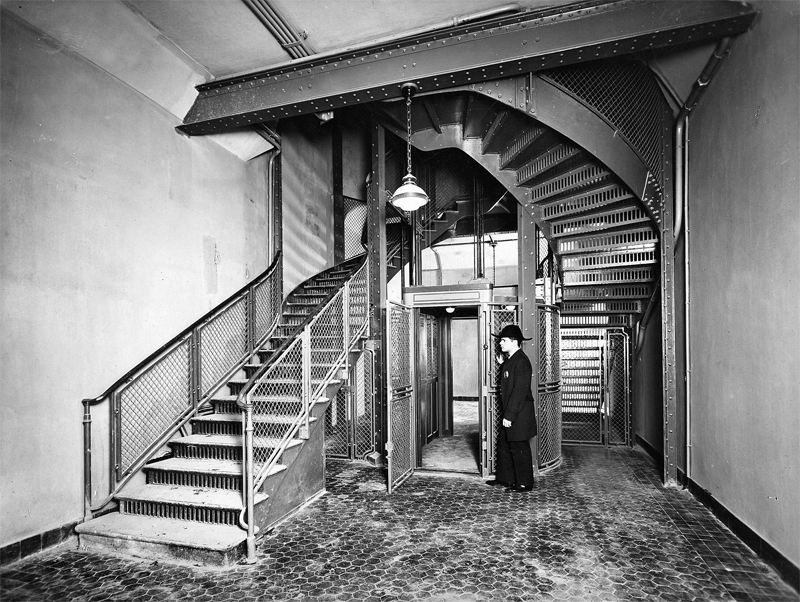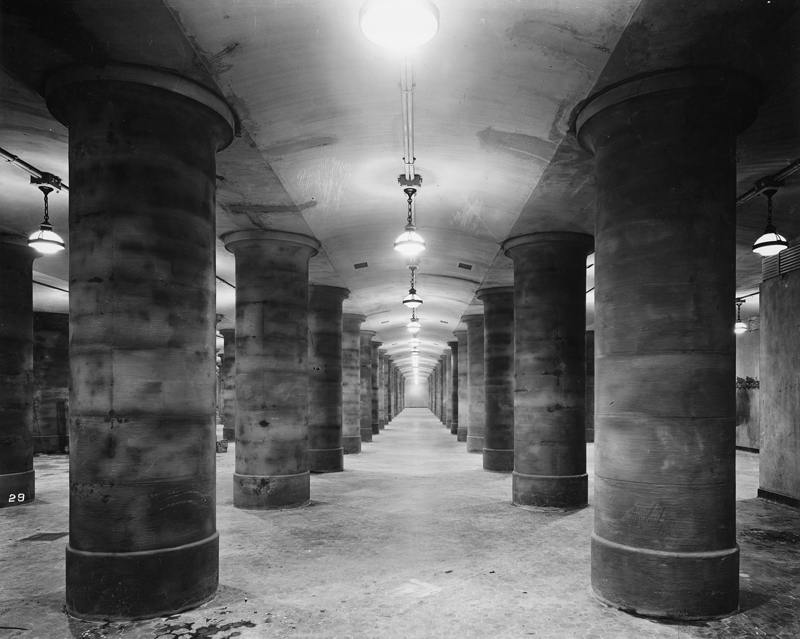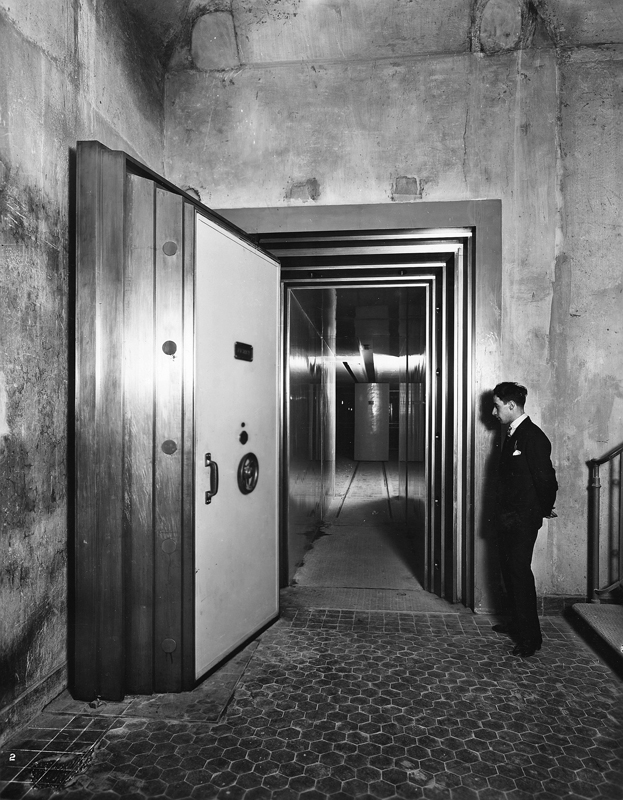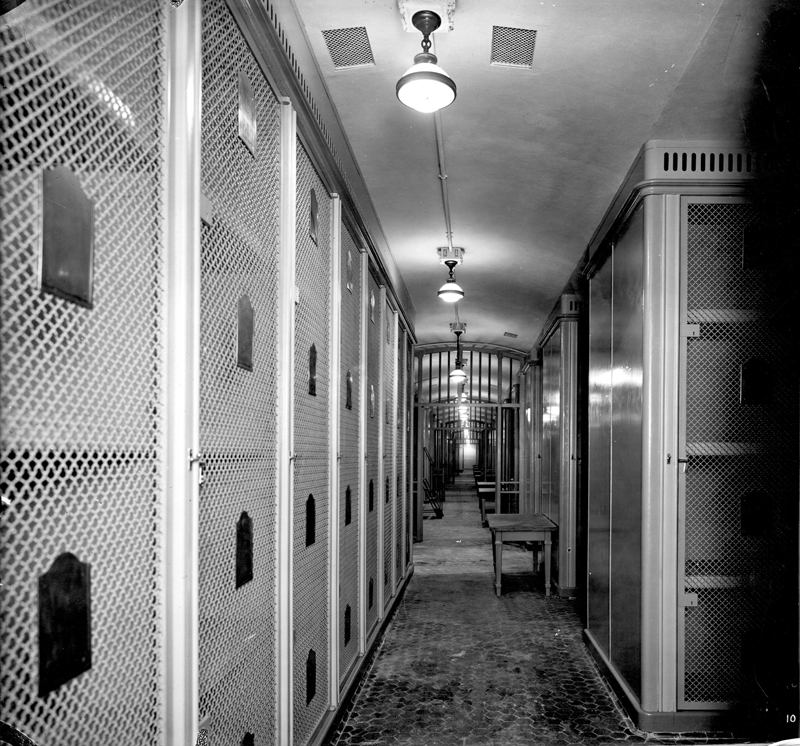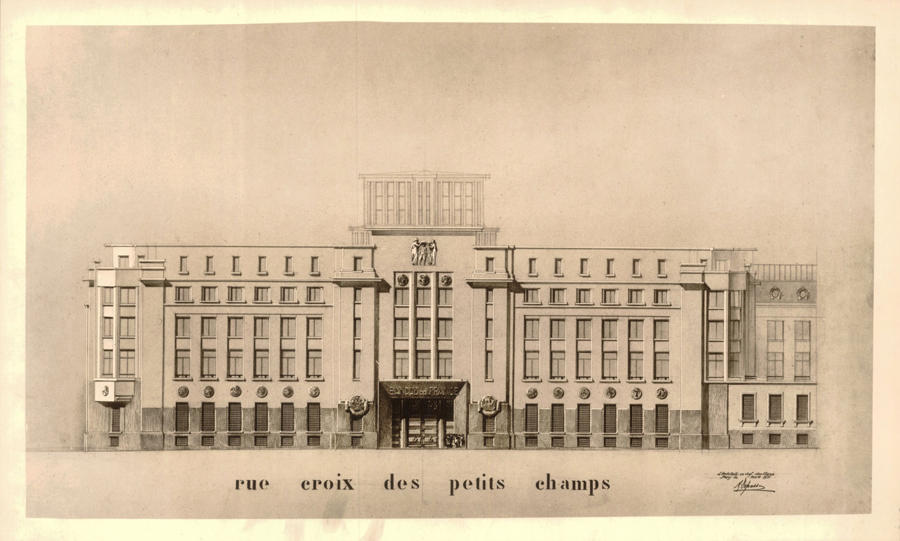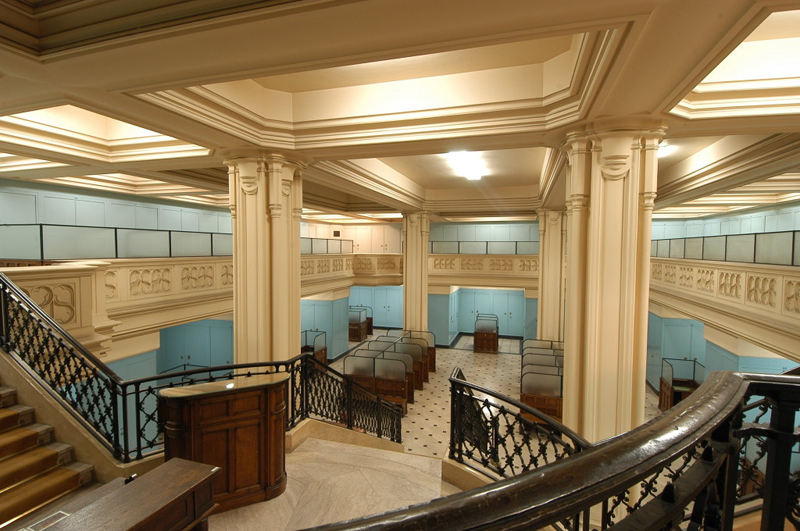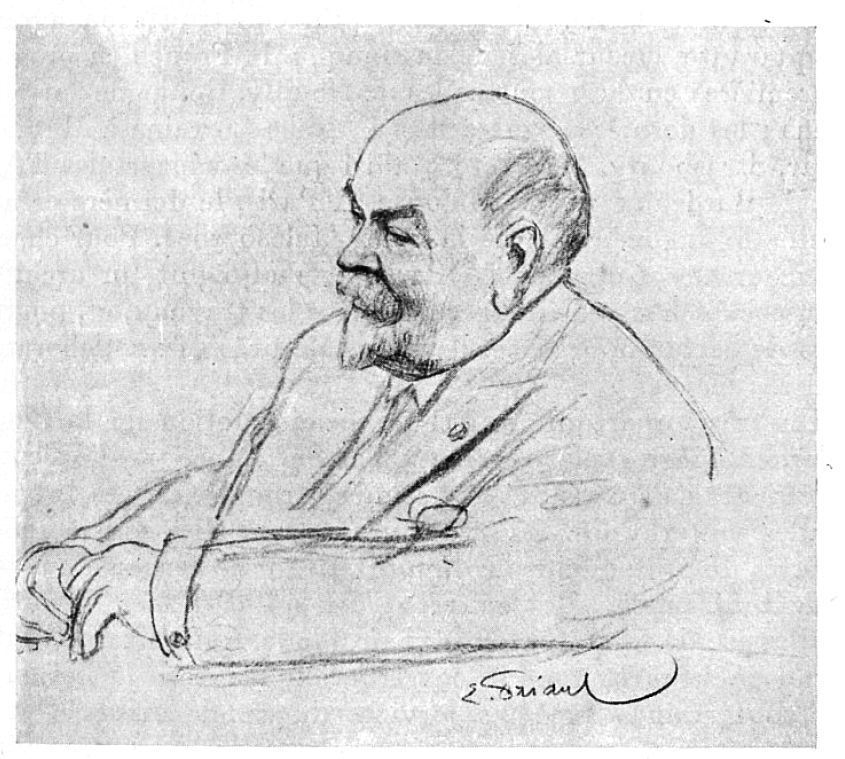Alphonse Defrasse, the Banque de France architect, transformed the Hôtel Gaillard into a branch of the bank. His work is eclectic, – influenced by Hellenism and the classical style as well as by the art deco movement.
Alphonse Defrasse was born in Paris in 1860. His family lived at 24, rue des Bons-Enfants in a building which, some 63 years later – the irony of history – he would have demolished to make way for the construction of one of his masterpieces, the underground vaults in the headquarters of the Banque de France.
He entered the École des Beaux-Arts in 1877, where he proved a brilliant student and won numerous prestigious awards. For a time, he stayed at the Villa Medici in Rome and travelled throughout the Middle East, Italy and Greece, and it was in Greece that he found the subject of one his best-known studies, “The Sanctuary of Asklepios at Epidaurus”. In collaboration with one of his co-disciples, Henri Lechat, he published an important work on this subject.
On his return from Rome, he started his long career as a professor at the École des Beaux-Arts in Paris, which still has his plans for the restoration of the Temple of Asklepios.
After winning the Rome Grand Prix in 1886, his career turned naturally to the renovation and construction of civic buildings. In particular, he was the project inspector for the French Natural History Museum’s glasshouses. He submitted designs for the 1900 Exposition Universelle competition and received a major award, working notably for Charles Girault on the construction of the inner courtyard at the Petit Palais.
At the same time, he was appointed as head of the architecture and works department for the Banque de France in 1899, barely two years after the decision to create 34 new branches throughout France for the Bank following renewal of its role as the sole issuer of banknotes.
Following his appointment, Alphonse Defrasse worked on three fronts: the nation-wide branch network, the Bank’s Paris headquarters building in rue de la Vrillière and a number of related buildings, and the transformation of the Hôtel Gaillard.
The branches
To deal with the extent of the construction work, in 1899 and then in 1905 Defrasse designed two model branches, whose façades and internal layout and fittings had much in common: use of identical materials, a vast reception hall lit by a glass roof, flooring and so on.
With the assistance of inspectors of works and local architects, he built 70 branches or offices and renovated, generally by extending, more than 80. All of this work was carried out between 1899 and 1927. The use of standard plans, while allowing for a degree of diversity linked to the local context, certainly contributed to this exceptionally rapid pace of work.
In 1920, the Banque de France also decided to create three district branches in Paris - Bastille, Malesherbes and Raspail – and to base its archives in Asnières, to construct its branches in Alsace-Lorraine (including Strasbourg), to rebuild branches damaged by the war, and to transfer or extend a number of existing branches. Alphonse Defrasse was involved in all of this work.
The headquarters building
The Banque de France, which occupied a quadrilateral parcel of land delimited by the rues Baillif, Croix des Petits Champs, la Vrillière and Radziwill, had envisaged extending its headquarters building since 1881.
Staff numbers had increased sharply and in 1907 Defrasse developed two projects, for a new façade and a grand entrance on rue de Valois. He had to wait until 1912 before the work could continue, following the sale of rue des Bons-Enfants and rue Baillif. These enabled the Bank to extend the southern limit of its building out to a newly created street, known now as rue du Colonel Driant.
Several more projects were developed between 1914 and 1922 before infrastructure and superstructure studies went ahead for the first time in 1924-1925 for the “new building” to be constructed, with a footprint of approximately 100 metres by 100 metres.
In terms of infrastructure, the underground vaults – which hold France’s gold reserves – earned Defrasse an international reputation. Constructed between 1924 and 1927, they comprise a vast vaulted room, buried some 25 metres below ground and supported by a network of 720 reinforced concrete pillars one metre in diameter. Access to the vaults is through the lift- and stair-wells. The striking architecture of the vaults is reminiscent of the hypostyle halls of ancient Egypt (see the article by R. Godillot in Architecture magazine, 15 August 1938).
As to the superstructure, Defrasse’s 1925 and 1930 projects, the façades for which were in the art deco style, include a number of design details that are seen in the final construction: a new entrance on rue Croix des Petits Champs, the reception hall, a two-level strong-room, and the courtyard and connecting wings between the new and old buildings.
Defrasse lived to see the completion of the underground vaults but died in 1939. His plans for extending the Bank’s superstructure were actually implemented by the architects Louis Faure-Dujarric and Paul Tournon between 1936 and 1950.
The Paris Malesherbes branch
We will talk here only briefly of the Hôtel Gaillard, citing in particular the renovation and restructuring work Defrasse carried out between 1919 and 1923 to transform this neo-gothic ‘hôtel particulier’ into a branch of the Central Bank.
The Hôtel Gaillard originally comprised a main building on place Catroux and two wings, on rue Berger and rue Thann, forming an inner courtyard. A monumental grand staircase connected the entrance, mezzanine and first floors.
The peak of Alphonse Defrasse’s art is undoubtedly seen here, in the way in which he successfully integrated a branch’s functions into an existing building. The monumental grand staircase services the various departments housed in the old public and reception rooms: offices for the director and secretariat, board room, controller’s office, cash office … and a new feature, central to the entire branch programme, that he integrated in place of the inner courtyard, comprising a basement strong-room with the reception hall above it.
The strong-room has an entrance guaranteed to fire the imagination of clients: a movable floor spanning a moat (serving as an alure, or wall-walk, by means of a suspended mobile boom), with a recessed door giving access to the vast, two-level strong-room.
The reception hall is on the first floor, over the strong-room. Covered with a metal-framed glass dome, it looks out on to the interior façades of this former ’hôtel particulier’.
Victor-Jules Février had provided Émile Gaillard with an exceptional canvas for his house and to display his collection in the heart of Plaine-Monceau. For his part, Alphonse Defrasse gave the Banque de France a branch whose internal layout and renovation were proof of his remarkable talent.
Today, some 90 years after Alphonse Defrasse’s work, the Hôtel Gaillard is being transformed once again, to house the Cité de l’Économie et de la Monnaie.
........................................
This article has been written with the help of the architect Patrick Vivien
........................................
Credits: Portrait of Alphonse Defrasse by Charles Lebayle (1856-1898).
Credit: Banque de France.
Façade of the Temple of Asklepios as envisaged by Defrasse. DR
Interior courtyard of the Petit Palais. Credit: Patrick Giraud
Images in the sections on “The branches”, “The headquarters building” and “The Paris Malesherbes branch”. Credit: Banque de France.
Portrait of Alphonse Defrasse by M. Friant. Source: INHA Library, coll. J. Doucet, 2010-83125 / Gallica
Published on 21 September 2012. Updated on 13 June 2024
Explore also...
-
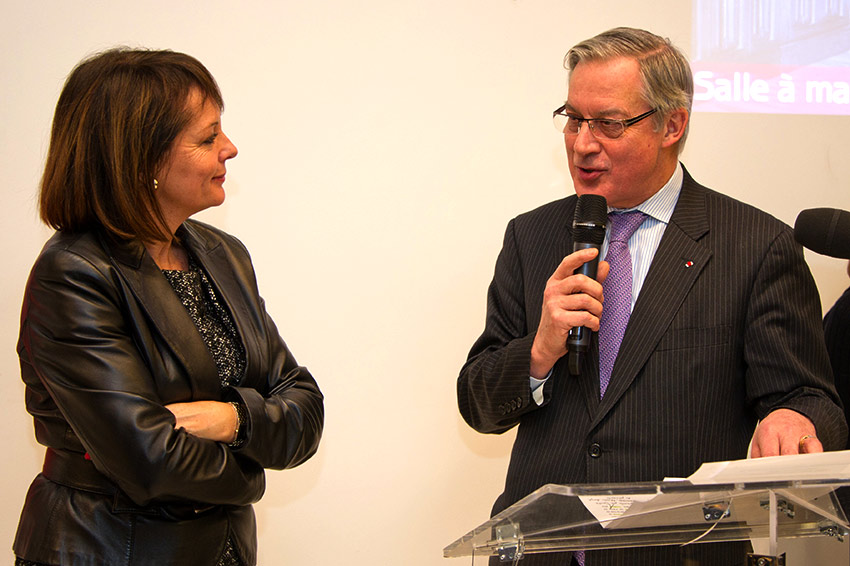
The City, Press room, Press events
A new life for the Hôtel Gaillard - January 16, 2013
-

The City, Teacher's corner, Guides
Cit€co: a guide for teachers
-
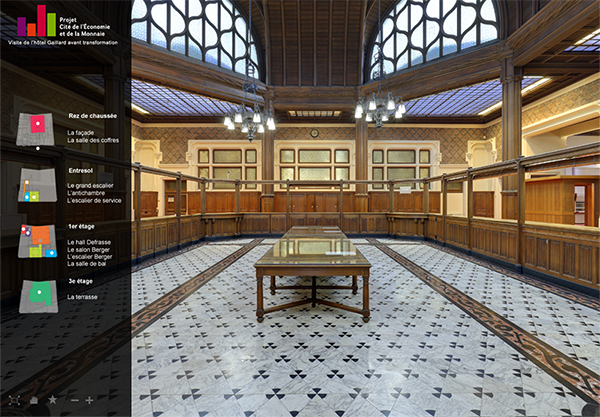
The City, The Hôtel Gaillard, Virtual visit
Virtual visit
-

The City, The keys of the economy, Players, Banks
Discover our new game: In a banker's shoes!
-
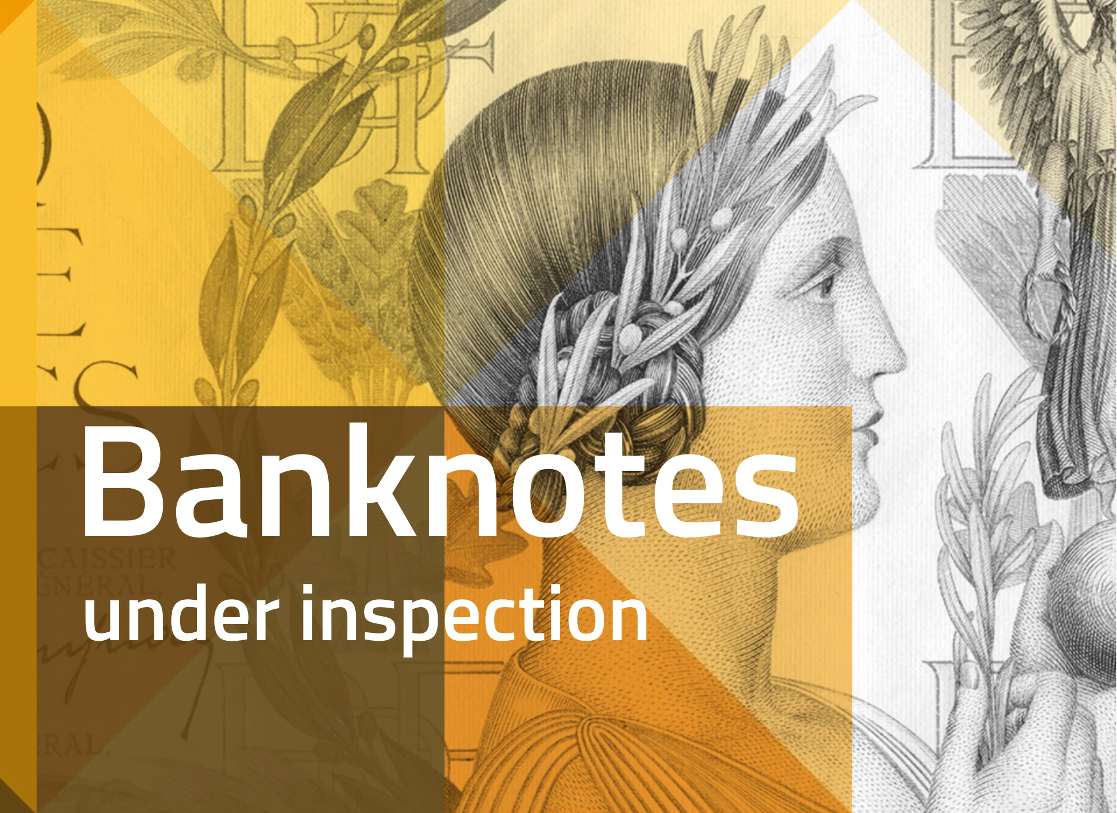
The City, Resources, The keys of the economy, Treasures, Banknotes and coins
Banknotes under inspection

